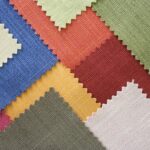Introduction
In the realm of contemporary fashion, individuality holds the key. Customers are increasingly inclined towards exclusive, unparalleled pieces that mirror their distinct style and persona. As a proprietor of a clothing enterprise, capitalizing on this growing demand for personalized apparel can significantly amplify your market presence and differentiate your brand from competitors. However, the intricate process of manufacturing clothing can appear formidable, particularly for those venturing into this realm for the first time.
Within this article, we will provide you with a comprehensive walkthrough on the journey of transforming your unique clothing concepts into tangible realities, be it through logo printing on t-shirts or bespoke dressmaking. With this in-depth guide, you will gain clarity on each step involved and possess the necessary knowledge to navigate through the entire process with confidence.

Step-by-step Guides
1. Define Your Design and Elaborate Requirements
Before delving into the production phase, the primary stride towards bringing your apparel design to fruition is to meticulously define your visionary concept. Deliberate upon the style, color palette, and distinctive elements you wish to incorporate. Whether through hand-drawn sketches or digital renderings, provide manufacturers with lucid insights into your creative vision.
It is imperative to possess a comprehensive grasp of your design requisites, taking into account the following factors:
- Design Concept: Concertize your design concept, encompassing style, aesthetics, and target audience.
- Functionality: Determine the purpose and intended functionality of your clothing, be it for casual wear, athletic pursuits, or special occasions.
- Materials: Engage in thorough research on diverse fabric options, meticulously selecting materials that align with your design vision while meeting stringent quality standards.
- Techniques: Specify the sewing techniques and craftsmanship you desire to be applied, ensuring that patterns and designs meet your lofty expectations.
- Size Range: Make a discerning choice regarding the range of sizes you wish to offer, considering diverse body types and market demands.
2. Research and Source Materials/Fabrics
The art of selecting appropriate materials for your custom clothing assumes paramount importance in achieving the desired levels of quality and aesthetic appeal. Engage in thorough research on various fabrics, acquainting yourself with their distinctive properties, encompassing durability, comfort, and care requirements. Compile a detailed list of your material preferences and establish communication with suppliers to source the precise fabrics you envision, procuring samples to verify their alignment with your expectations.
Nonetheless, it is essential to remain mindful of Minimum Order Quantities (MOQs) that fabric suppliers might impose, ensuring that they align harmoniously with your production needs and budgetary constraints.
*For those conscious of environmental sustainability, consider exploring eco-friendly alternatives and inquire about the suppliers’ sustainability practices to align with your brand’s environmental ethos.
KakaClo provides garment manufacturing service with small bulk custom, accommodating an MOQ of 200 pcs, all the while excelling in professional material sourcing and production techniques.
3. Find the Ideal Garment Manufacturer
Discovering the perfect manufacturer assumes pivotal importance in propelling your custom clothing endeavor toward success. Scrutinize their reputation, request samples showcasing their craftsmanship, and inquire about their production capacity and turnaround time. Establishing clear lines of communication and ensuring a mutual understanding of your design requirements is of utmost significance. Seek out manufacturers who specialize in the specific type of clothing you aim to produce, be it casual wear, activewear, or formal attire.
Adhere to these steps to ensure that you select a reliable and compatible collaborator:
- Extensive Research: Conduct comprehensive research online, participate in trade shows, and actively network with industry professionals to identify potential manufacturers.
- Experience and Expertise: Prioritize manufacturers with extensive experience in producing clothing akin to your design aspirations, equipped with a nuanced understanding of your specific requisites.
- Quality Standards: Scrutinize the manufacturer’s quality control processes and certifications to ensure their ability to deliver high-quality garments.
- Effective Communication: Effective and efficient communication forms the bedrock of a fruitful partnership. Opt for a manufacturer who displays responsiveness, proactivity, and a willingness to collaborate.
KakaClo offers end-to-end apparel supply chain solutions for all clothing enterprises, encompassing professional custom clothing production. KakaClo accepts small MOQs with swift turnaround times and covers an extensive catalog as well as responsive client services.
4. Craft Samples and Validate Prototypes
Prior to commencing mass production, it is prudent to fabricate prototypes and samples to validate your design and gather valuable feedback. Collaborate closely with your manufacturer to refine elements such as fit, fabric selection, and additional details. This iterative process aids in perfecting your design and ensures that the final product surpasses your expectations.
To guarantee the quality of your custom clothing, adhere to the following steps:
- Pattern Checking: Scrutinize the accuracy of patterns, ensuring that they align precisely with your design specifications.
- Sample Evaluation: Assess the sample’s fit, construction, intricate details, and overall design to ascertain its alignment with your vision.
- Refinement Assessment: Conduct fit tests and gather feedback from potential customers or focus groups. Incorporate necessary adjustments and refinements to elevate your design to new heights.
5. Strategize Production and Manufacturing
Once content with your prototype, it is time to lay the groundwork for production. Determine the desired quantity of clothing and engage in comprehensive discussions with your manufacturer regarding the production timeline. Take into account crucial factors such as lead times, shipping logistics, and any special requirements pertaining to labeling or packaging.
Contemplate the following facets:
- Production Timeline: Conceive a pragmatic production timeline that factors in lead times for materials, sample approval, and production capacity.
- Capacity Planning: Assure that the manufacturer possesses the necessary capacity to meet your production needs within the stipulated timeframe.
- Regular Updates: Maintain open lines of communication with the manufacturer to track progress, address any potential issues, and make timely adjustments as needed.
- Production Monitoring: Implement a robust system to monitor production milestones, quality control, and adherence to agreed-upon specifications.
6. Keep Eyes on Packaging and Shipment
Packaging and labeling serve as pivotal components in presenting your custom clothing to customers while cultivating brand recognition. Following the packaging phase, you venture into the final stride: shipment. Efficient shipping and logistics play a critical role in ensuring timely delivery, particularly when aligned with marketing schedules that necessitate the swift release of custom products.
Consider the following:
- Packaging Design: Fabricate packaging that harmonizes with your brand image and enhances the overall customer experience.
- Labels and Tags: Design and produce labels and tags that convey vital information such as size, care instructions, and brand identity.
- Shipping Options: Conduct thorough research and comparison of diverse shipping options to ascertain the most cost-effective and reliable solution tailored to your unique requirements.
KakaClo provides full-package service encompassing production to delivery, obviating the need for arduous negotiations with external logistics companies.
Conclusion
Embarking on the journey of bringing your apparel design to life and creating your own unique clothing is an exhilarating endeavor. By perusing this article, you will acquire a clear understanding of the necessary steps involved in getting your custom clothing made.
It is crucial to emphasize the significance of attention to detail, effective communication, and partnering with a reliable manufacturer in order to bring your vision to fruition. With these key elements in mind, chart your course and follow the step-by-step process to complete your inaugural customization venture for your business!
Make your custom clothing design a reality with KakaClo today!
FAQs
Q: How long does the apparel production process usually take?
A: The timeline for apparel production can vary depending on factors such as design complexity, order quantity, and manufacturing capabilities. On average, it can take anywhere from a few weeks to several months.
Q: What is the minimum order quantity (MOQ) for custom clothing production?
A: MOQs can vary depending on the manufacturer and garment type. It is important to discuss MOQs with potential manufacturers early on to ensure they align with your production needs.
Q: Can I use my own fabric for custom clothing production?
A: Yes, you can provide your own fabric to the manufacturer. However, it is important to ensure that the fabric meets quality standards and is suitable for the desired design.
Q: How can I ensure the quality of my custom clothing?
A: Implementing a robust quality control plan, conducting regular inspections, and working closely with the manufacturer are key to ensuring the quality of your custom clothing.
Q: How should I price my custom clothing products?
A: Pricing custom clothing involves considering factors such as material costs, labor, overhead expenses, and desired profit margins. Conduct market research to understand pricing trends and ensure your pricing is competitive yet profitable.







